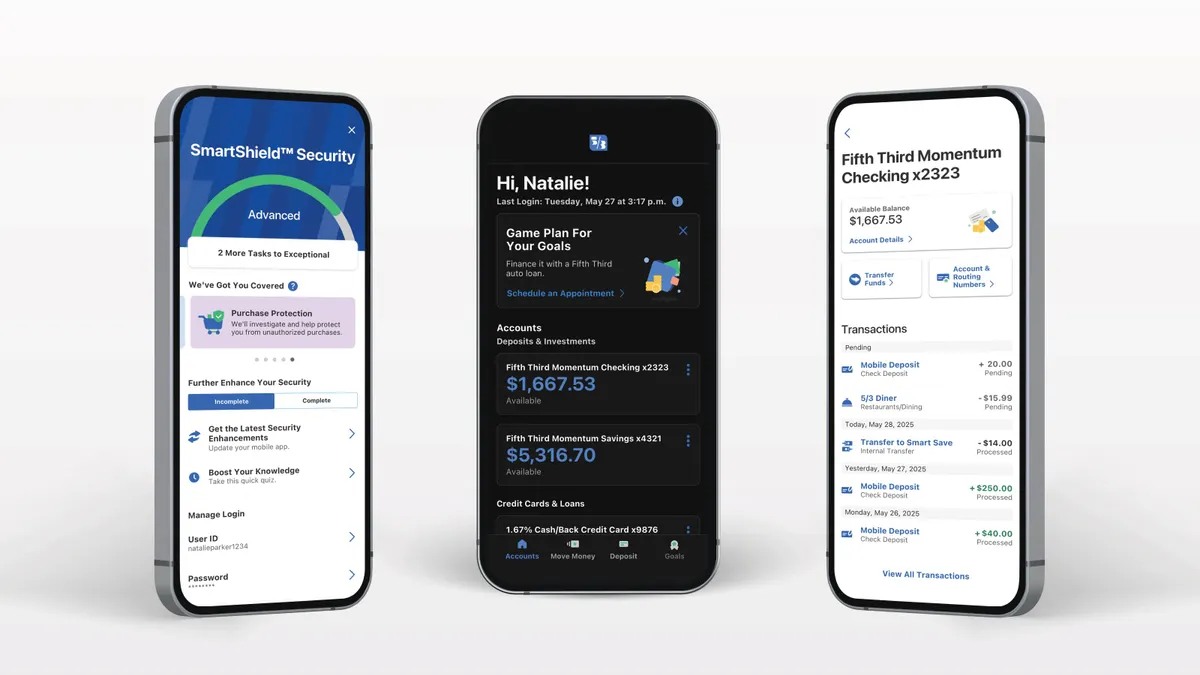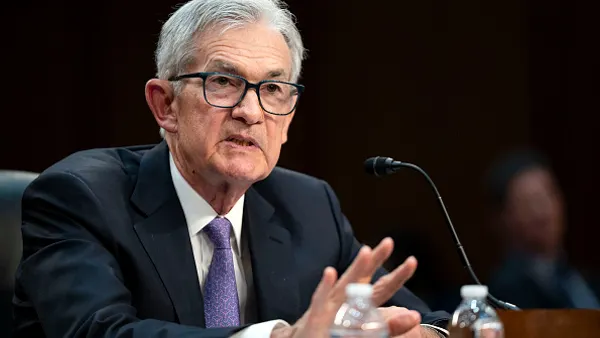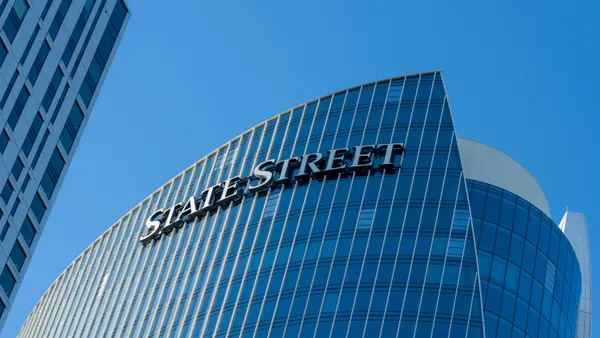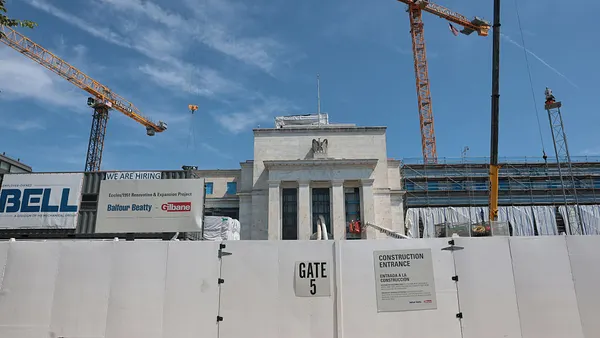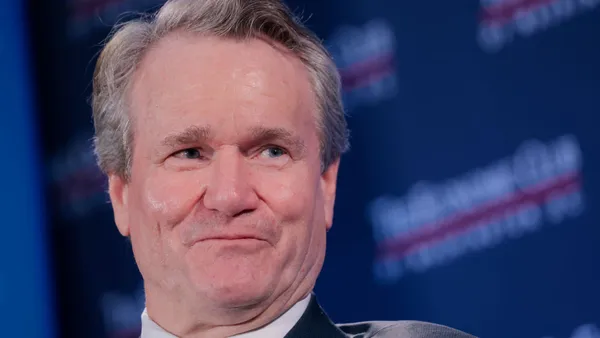Dive Brief:
- The Federal Reserve is considering using the countercyclical capital buffer to ensure credit is available in the event of an economic downturn, according to The Wall Street Journal.
- The tool, which was created by international regulators in 2010 and approved by the Federal Reserve in 2016, would require banks to hold more capital should the economy show signs of overheating, or hold less during bad economic times.
- The tool has never been used in the U.S., but Randal Quarles, the Fed's vice chairman for supervision, told the Bipartisan Policy Center last month the U.S. has calibrated its "through-the-cycle requirement" so high that the buffer is effectively always on. The buffer would only apply to banks with more than $250 billion in assets.
Dive Insight:
The Fed governors, who have been debating whether to use the regulatory tool since last year, are discussing whether now is the right time. It's not clear when the members will reach a decision, the Journal reported.
"The idea of putting it in place so you can cut it, that's something some other jurisdictions have done, and it's worth considering," Fed Chairman Jerome Powell said at a press conference in July.
Banks, whose profits are already under strain from low interest rates, may oppose enacting the buffer. A requirement to increase banks' capital reserves can hurt profitability, the Journal reported.
Fed officials are also debating how the tool should be used. Although some officials said the higher capital requirements should be applied immediately, others suggest turning it on without increasing capital levels. This would signal that the regulatory agency is prepared to use the tool, just not right away.
Fed Gov. Lael Brainard dissented from a March Fed vote to leave the buffer dormant and said in a May speech that turning on the buffer "would build an extra layer of resilience and signal restraint, helping to damp the rising vulnerability of the overall system."
"The essence of the cycle is that market sentiment [may] become overconfident precisely when risk is actually highest," Brainard told the Peterson Institute for International Economics in December.
Quarles, meanwhile, defended the Fed's decision to hold the buffer at zero percent for the third straight year, saying the U.S.'s through-the-cycle requirements are, in some cases, double the amount agreed internationally.
"Financial stability risks are not meaningfully above normal [in the U.S.] because there's so much capital in the banking sector," he said.
The American Bankers Association opposes raising the countercyclical capital buffer. Countercyclicality is already addressed through the Federal Reserve's stress tests, the trade organization said in comment letters to the Fed.






